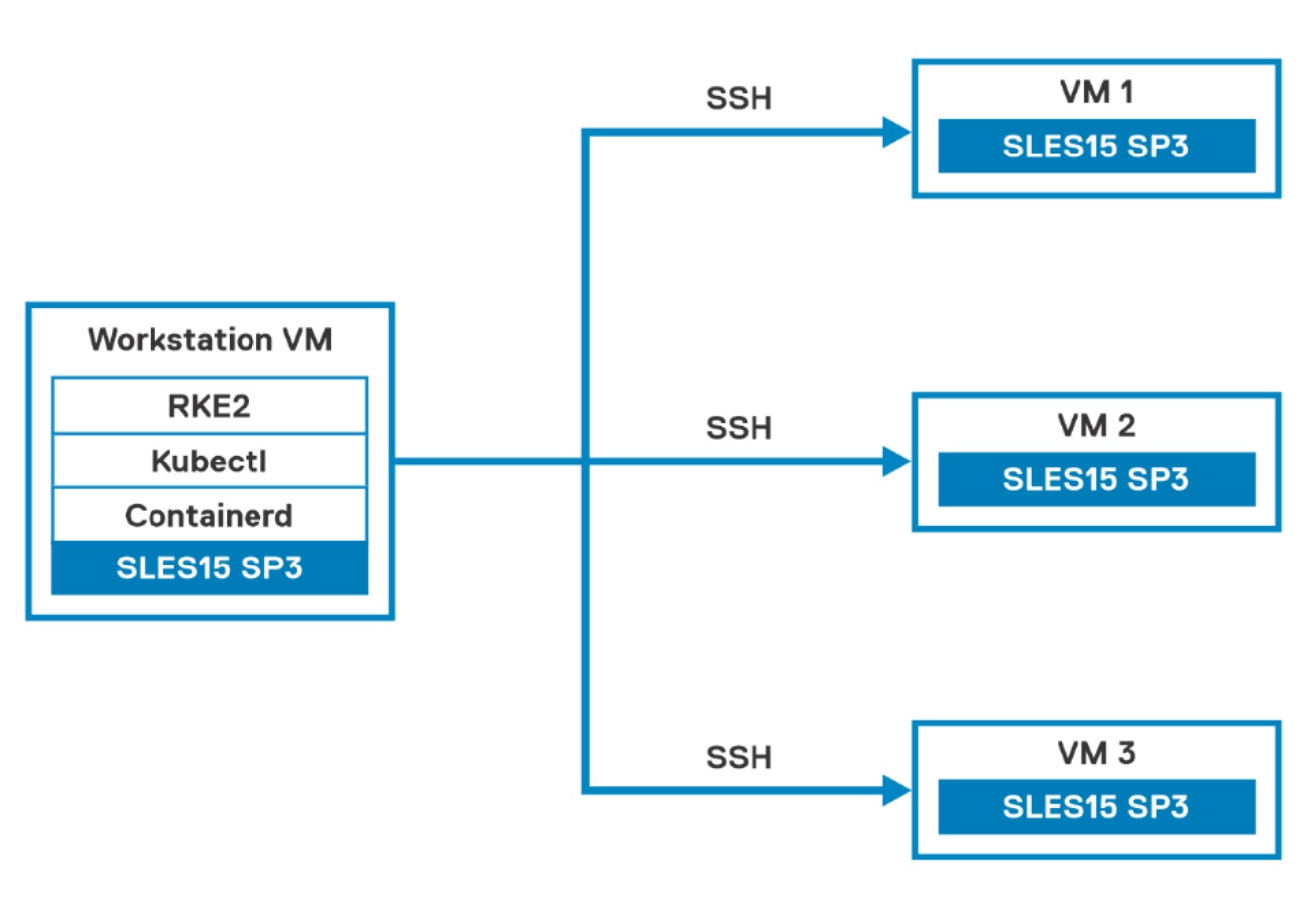Home > Storage > PowerFlex > White Papers > SUSE Rancher and RKE2 Kubernetes cluster using CSI Driver on Dell PowerFlex > Requirements
Requirements
-
The requirements for building a SUSE Rancher on RKE2 Kubernetes cluster are as follows:
Table 2. Requirements for RKE2 cluster on PowerFlex family
Name
Description
Reference
SUSE Rancher server
SUSE Rancher server is used from Workstation VM.
https://releases.rancher.com/server-charts/stable
SUSE Rancher Kubernetes Engine Government (RKE2)
RKE2 is used from Workstation VM.
https://get.rke2.io
https://docs.rke2.io/
Kubectl
Kubectl to interact with Kubernetes cluster.
https://kubernetes.io/docs/tasks/tools/install-kubectl/
SLES15 SPx nodes
Ensure that the nodes are accessed using SSH and the required ports must be opened before the cluster installation.
https://docs.rke2.io/install/requirements/
PowerFlex CSI
PowerFlex CSI is used from the Workstation VM.
https://github.com/dell/csi-powerflex
Pre-requisites for installing SUSE Rancher on RKE2 Kubernetes
Note: All servers must have SUSE SLES license and be able to connect to SUSE customer center or a local RMT server. To update the servers to latest updates, run the zypper update.
- Disable the firewalld and apparmor service.
$ systemctl disable apparmor.service
$ systemctl disable firewalld.service
$ systemctl stop apparmor.service
$ systemctl stop firewalld.service
$ systemctl status apparmor.service
$ systemctl status firewalld.service
The RKE2 binary is available for Windows and Linux operating systems. In this solution, RKE2 is run from a Linux workstation VM. RKE2 connects to the nodes using SSH key pairs.

- Create an SSH key pair using the following command from the Workstation VM:
$ ssh-keygen
The following files are created after SSH key pairing:$HOME/.ssh/id_rsa (SSH private key, keep this secure)
$HOME/.ssh/id_rsa.pub (SSH public key)- Copy the SSH public key to the Kubernetes nodes to provide access to the nodes, using the created SSH key pair.
$ ssh-copy-id -i ~/.ssh/id_rsa.pub <user_name>@<hostname>
- Test SSH connectivity by running the following command from the Workstation VM, replacing 'hostname' with each of the Kubernetes nodes IP or hostname.
$ ssh -i $HOME/.ssh/id_rsa <user_name>@<hostname>
- Disable swap if it has not been removed from the disk proposal during the install:
$ systemctl disable swap.target
$ swapoff -a
For more information, see Installation Requirements.
- Disable the firewalld and apparmor service.
